The Environment
Provence
The Provence is located in the south east of France and reaches from the Mediterranean coast to the lower Rhône (Orange, Arles, Saintes-Marie-de-la-Mer), across the departement Bouches-du Rôhne (Salon-de-Provence), and into small mountain ranges and reaching the foothills of the Alpes.
The beauty of this scenic and varied landscape, the cities with important cultural monuments, and the consistently blue sky make the region to one of the most interesting parts of France. The partly subtropical vegetation is typical for southern latitudes. Due to the Provence's protective barrier of the Alpes in the north and the open coast line in the south, the climate is warm yearround and especially mild in winter.
Visit some of the ancient Roman locations in Arles, St. Remy, Orange, Avignon, Aix-en-Provence, etc., and the numerous festivals belonging to the Provence. The smells of the kitchen are coined from herbs like thyme, rosemary, and garlic, while the olive oil replaces the butter. Ratatouille, Bouillabaisse, sauces from tomatos, olives and herbs with meat, and fish are just parts of the menus. There are also excellent wines of the Provence.
Luberon
Do you want to discover the original in one of the most beautiful regions in France close to nature and far away from overcrowded passes? If so, you have found the right place for you.
The mountains deep inside the Provence - between Cavaillon and Manosque - is part of the "Parc Régional du Luberon". It was founded in 1977 and contains the unique landscape called "Colorado Provençal".
Many artists settled in many little mountain villages like Gordes, Roussillon, Saint-Saturnin-d'Apt, Bonnieux, Lacoste, Oppède, Ménerbes. The artists were inspired by the landscape and the light in the area.
Roussillon which is one of the most beautiful villages in France is one of the highlights of the area. The little village is located on the Mont Rouge (Red Mountain) in 335 m hight and coined by ocher-painted houses that give the village a very special atmosphere. The view from Castrum is overwhelming - a natural stone-terrace into the ocher canyon whose form comes from the commercial reduction of the ocher and the erosion by wind and rain. On good marked paths in the "Colorado Provençal" you can hike through the former areas from the reduction of the ocher.
The Luberon has many different ways to get in touch with nature. You can find paradises for climbing as well as good marked hiking paths.
A cycle tour on the Route des Cedres is always recommended. The Route des Cedres is a paved path through the forest above the village Bonnieux. The tour offers facinating views in direction Mont Venoux as well as above the Durance's valley to the Mediterranien Sea and the Montagne St. Victoure.
Beyond the village Gordes you can finally find the "Village des Bories". These stone houses are great examples of the agrarian living of earlier generations. You will find many museums celebrating the villages. For example there is a museum of bakery in Bonniex and a museum of corkscrews in Menerbes to visit.
Lacoste
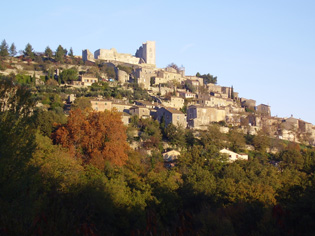
The scenic village is the former ancestral home of the Marquis de Sade. When he was not in the "Bastille de Provence" he spent his life in the castle that is placed above Lacoste. Some years ago Pierre Cardin bought the castle and renovated a part of it for living. From the platform around the castle you have a very nice view on the surrounding villages Roussillon, Bonnieux, the valley of the Coulon to Apt and far above this to the Montagne de Lure. On numerous hiking paths you can explore this landscape.
Menerbes
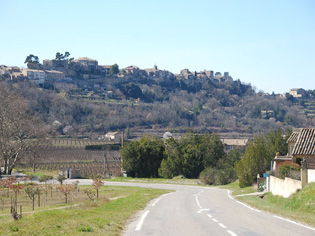
is a small, scenic and provençal village. Located off from the main roads it is counted as the most beautiful village of France by many people. Situated on a streched rock it is visible from far away for visitors. Because it is the former home of Peter Mayle many of his provençal stories act in Menerbes and the surrounding villages.
Apt
is about 15 km away from Lacoste. On the way to Apt you pass the Pont Julien and will be confronted with the Roman past. This bridge was built in Roman times and used for public traffic till mid of 2004. Some years ago there was a new bridge built to detour the Pont Julien. Since that time it can only be seen by visitors.
Apt itself it the centre with a nice historic town located in the valley of the river Coulon. The cathedral Ste Anne is worth seeing and there is a weekly market in the street of the town every Saturday. The town that is located between the "Petit" and "Grand Luberon" is base for hikes, cycle tours and many other activities.
Last but not least is Apt famous for a sweet speciality: candied fruits.
Gordes
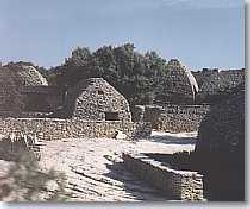
Fascinating located on the abrupt cliff Gordes developed to a village for celebrities that is focused on good paying clients. Nevertheless or even because of that the town has much to offer. It is dominated by a big castle where the Fondation Vasarely was domiciled for many years. Close to Gordes you can find the Abbey Senanque and the Village de Bories that are worth seeing.
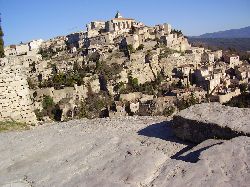
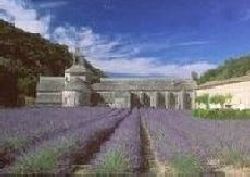
Fontaine de Vaucluse
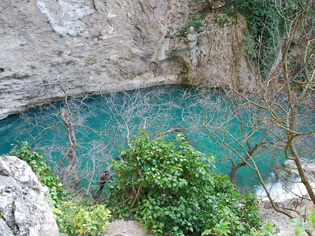
the place at the Sorgue's fountain that was name-giving for the Departement. It is located inside acircular deep valley and surrounded by high cliffs. The fountain that spends a lot of water is still not totally explored today. Even with small submarines it was not possible to clarify where the water comes from. Nobody wonders there why millions of visitors find their way every year to explore this mysterious place. Many of them come multiple time to see this natural spectacle.
A few hundert meters from the fountain down the river you can already start to guided kayaking and canoeing tours.
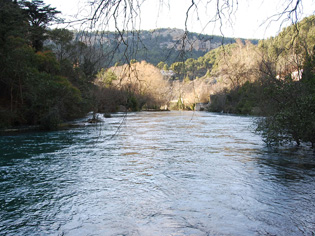
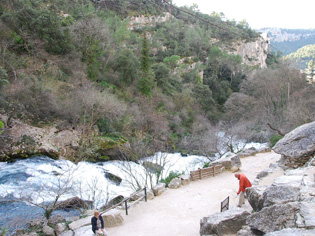
Cavallion
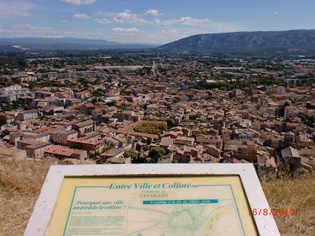
is known as the centre of planting melons. The tasty melones from the region are also known under the city's name. With the excellent economical location at the Durance there are many forwarding companies in the city. It is worth the short walk from the triumphal arch in front of the touristic office to the Chapel St. Jaques. While the path can be steep while winding up the cliff, after about 10 Minutes the hiker reaches his destination with a gorgeous view on the environment.
Inside the city the Roman Cathedral and the baroque synagogoue are worth seeing.